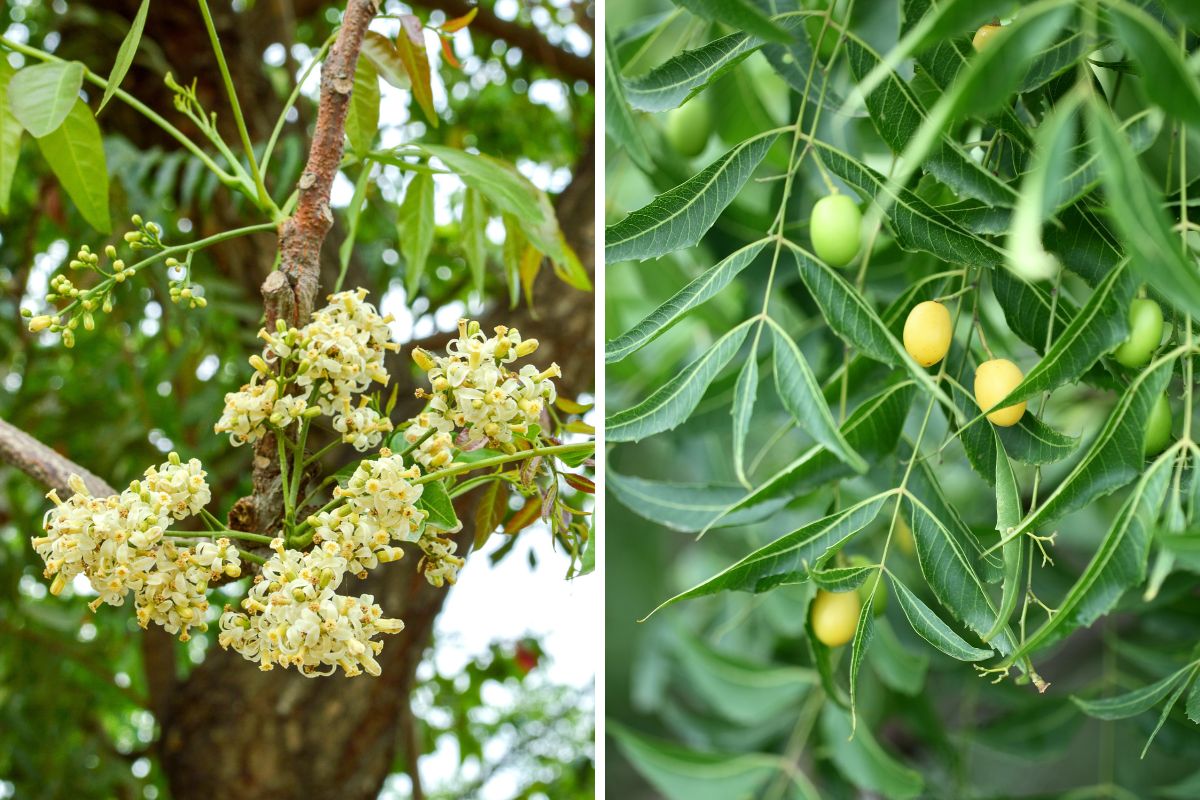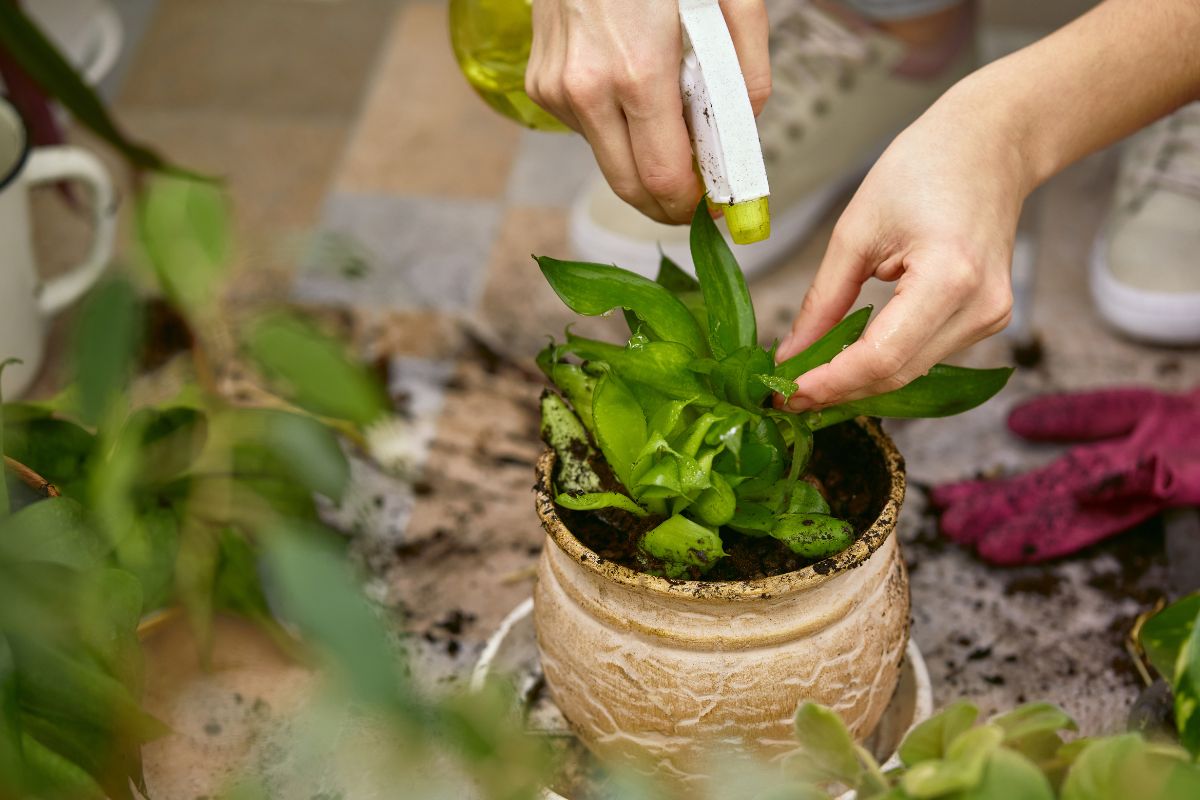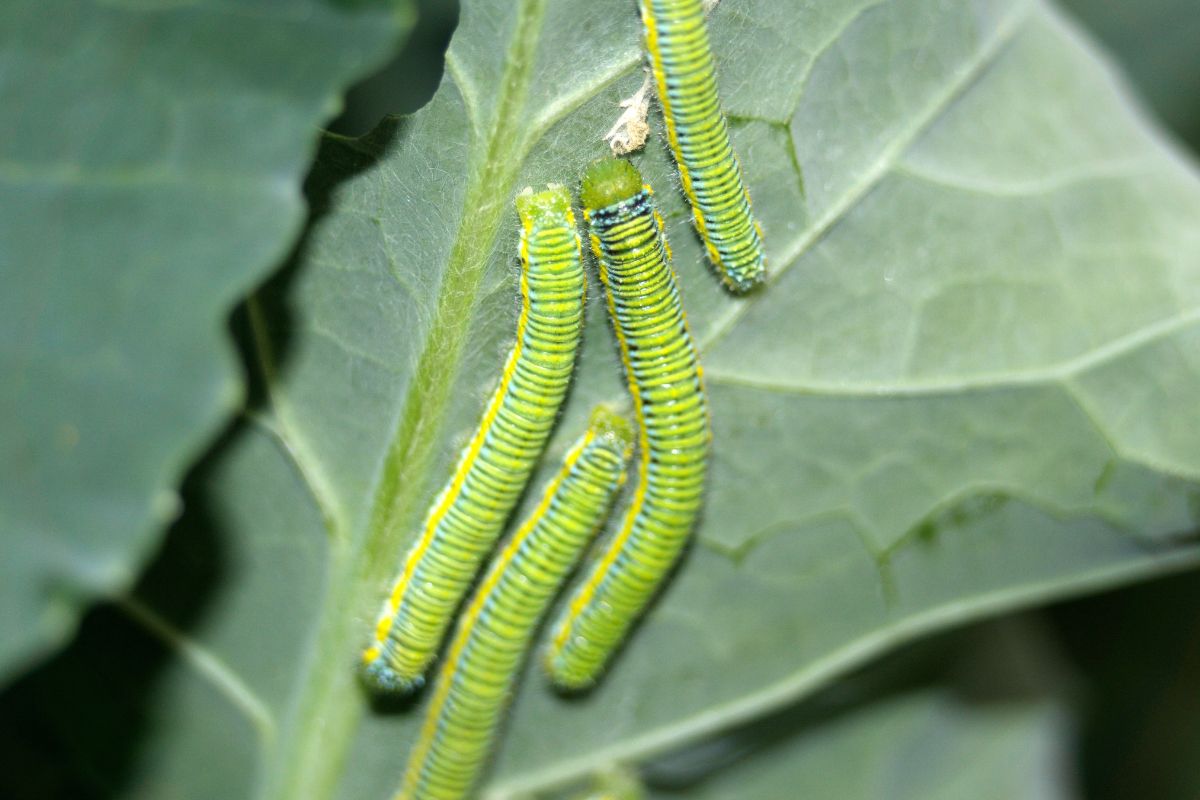If you're dipping your toes into the world of organic gardening, you'll quickly find many references to neem oil, which reputedly can fix a wide array of pest and disease problems that might hit your garden. Can the lofty claims be true? Amazingly, and for the most part, the answer is yes; neem oil holds the honour of being both fully organic and highly effective, though its use does come with a few cautions. It is worth taking the time to find out what neem oil is and how it is used in the garden if you’re considering using neem as part of your pest control strategy.
What is Neem Oil?
Neem oil is a vegetable oil derived from parts of the neem tree (Azadirachta indica), a member of the mahogany family that’s native to northeastern India. Neem is a fast-growing evergreen tree that can reach 20m or more in height and grow almost as wide, with dark green leaves and small white flowers grouped onto drooping panicles. The tree produces yellow fruit that look a little like olives and contain a single seed. While growing your own source of neem oil may sound attractive, the trees are large and can be invasive; they’re declared pest species in some states.
The seeds and fruit of the neem are either crushed or exposed to solvent in order to extract the oil. For use in the garden the oil must be diluted before use; applying pure neem oil to a plant would be overkill for even the worst malady, and is likely to be harmful. The neem oil available for purchase is stabilised by mixing it with other oils and often contains a surfactant that helps the oil mix with water while it’s being applied.
Like any natural product, neem oil contains many different substances, including the compounds azadirachtin and nimbin. These compounds are known to have antifungal and antiseptic properties as they interfere with fungi’s ability to metabolise. This makes neem an effective treatment for sooty mould and potentially for some mildews and rusts.
However, to call neem oil a simple antifungal/antiseptic agent would be to do it a great injustice. Its main use in gardening is as a natural insecticide for chewing and sucking insects.
Neem Oil as an Insecticide
When ingested, neem oil interferes with insects’ digestion and appetite. It also restricts their growth, preventing them from moulting. This effectively prevents insects from making the transition to an adult stage of life, for example stopping maggots turning into flies or caterpillars becoming butterflies. The list of insects that are killed by neem oil is long, and includes aphids, mites, mealybugs, scale, whitefly and curl grubs.
Like white oil, neem can suffocate insect pests if applied thoroughly as a spray. This is both an advantage and a disadvantage; it makes the oil more effective but less targeted. It’s also possible that the smell of neem may deter some insects from visiting plants, though the evidence for this is less clear. The aroma has been described as ‘garlic and sulfur mixed with a bit of rotting onion’, something to keep in mind for humans as well as garden pests!
How to Apply Neem Oil
As a Spray
To target most chewing and sucking insects neem oil is applied as a spray. Follow the instructions on the packet, paying particular attention to dilution rates. Only mix what you need for a single application as the shelf life of the diluted spray is measured in hours rather than days or weeks.
If possible, choose an overcast day without strong winds. It’s generally best to spray in the early morning or late afternoon when plants are well hydrated and not suffering from heat stress. Spray both the tops and undersides of leaves to the point of runoff - this is when you just start to see drops of liquid dripping from the leaves.
A repeat treatment is usually recommended. The time interval between sprays will depend on the lifecycle of the pest being controlled, so again, follow the instructions on the packet.
As a Drench
Neem oil can also be used as a soil drench, which is effective as a treatment to control armyworm and curl grubs. To do this, mix the oil in a watering can to the recommended dilution rate and water in to the soil.
Pros and Cons
While neem oil may seem like a panacea for garden pests, as with any pest management technique there are also some drawbacks.
Pros
- Neem is a naturally occurring oil that is approved under most organic certification schemes.
- It’s effective against a wide range of chewing and sucking pests and diseases.
- It generally only kills insects that feed on plants, leaving ones that visit but do not feed, such as bees and butterflies, alone.
- Because of it’s short effective life, neem oil generally doesn’t work it’s way up the food chain (eg a ladybird that feeds on an aphid that’s ingested neem is unlikely to be killed).
Cons
- While it has been approved for use on edible crops in other countries, it is currently only approved for ornamental plants in Australia.
- The active compounds in the oil break down quickly once diluted, so the diluted oil cannot be stored and repeat applications are often required.
- The oil can damage foliage if it’s applied on hot days. It’s best not to spray when the temperature is forecast to top 30 degrees.
- There’s a possibility of inadvertently suffocating beneficial insects such as bees if the oil is applied liberally, or if they are on plants when the spray is applied.
- When used as a soil drench neem oil is less targeted and may kill useful soil organisms and insects.
Neem oil lives up to its reputation as a widely applicable, highly effective organic gardening aid. It works, causes less harm to beneficial or incidental life than many other treatments, and breaks down rapidly after use. While there are some drawbacks to its use, it's posible that neem oil deserves a place in your pest control arsenal.









